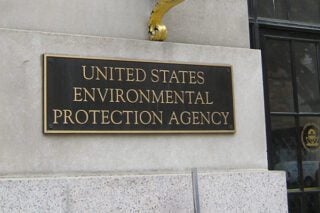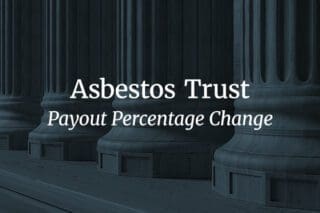
Asbestos use at chlorine plants continues to put chemical plant workers and their families at risk. Two major chlorine producers, Olin and OxyChem, deny operating dangerous facilities. But recent reports highlight asbestos exposure risks at these jobsites.
Asbestos is not banned in the United States, despite the dangers created by exposure. Asbestos exposure can lead to the development of diseases like mesothelioma and lung cancer. Companies like Olin and OxyChem can still import chrysotile asbestos to use in manufacturing. The recent reports on chlorine plants are the latest evidence that a full asbestos ban is needed to ensure worker safety.
Chlorine Producers Continue to Use Asbestos in Chemical Plants
The chemical industry continues to import more than 200,000 pounds of asbestos a year for use in chlorine plants. This is legal under the current U.S. asbestos laws, which ban mining of the mineral but allow companies to import it.
Eight plants currently in operation in the United States use asbestos to produce chlorine. They are located in Louisiana, Texas, Alabama and Kansas. Other facilities in New York, Washington and Nevada only recently stopped using asbestos.
Chrysotile asbestos is not necessary to produce chlorine. OxyChem has upgraded some facilities to use polymer membranes instead of asbestos-coated metal screens.
Both OxyChem and Olin claim that asbestos use at their plants is safe for workers.
Recent Reports Highlight Risk of Asbestos Exposure at Chlorine Plants
Recent reports from ProPublica contradict Olin and OxyChem’s claims about the dangers of working with asbestos. They reveal conditions where workers risk occupational asbestos exposure. Workers’ family members may also experience secondary asbestos exposure. This type of exposure comes from fibers brought home on workers’ clothes and in their hair.
For example, an Olin plant in McIntosh, Alabama, exposed workers to dangerous conditions. Designated asbestos workers at the plant received personal protective equipment (PPE). But workers say that exposure was inevitable, especially because safety standards were not always enforced. Power-washing the metal screens splattered asbestos fibers everywhere. Other tradespeople and maintenance workers at the plant did not receive appropriate PPE.
Individual fibers are invisible to the human eye, with diameters hundreds of times smaller than a strand of human hair. Just because workers did not see asbestos in the air does not mean the fibers were not airborne. At the McIntosh plant, asbestos dust dried and settled on machines and became caked onto overhead beams.
These asbestos problems were not limited to the McIntosh plant. A plant in Niagara Falls, New York, also exposed workers and residents to asbestos dust. In the summer, windows and doors were left open to keep workers from overheating. This allowed asbestos to escape the plant into the outside air. Workers also risked carrying fibers to other parts of the plant compound. In one instance, so much asbestos was carried into a break room that it had to be closed.
Both Olin and OxyChem claim that their chlorine plants are safe for workers. But these recent reports indicate the danger of exposure at these facilities. The reports highlight the need for a complete ban on this dangerous mineral to protect workers. Without a comprehensive ban, chemical workers continue to be at risk of exposure.
Lawmakers and EPA Consider a Ban on Asbestos
For decades, chlorine companies have argued that workers at their plants were safe from asbestos exposure. The ProPublica reports show that this has not been the case. The reports, activism and bans in other countries have U.S. lawmakers reconsidering an asbestos ban.
In April 2022, the Environmental Protection Agency (EPA) proposed a new partial asbestos ban. The plan is to ban chrysotile asbestos use. The agency says it hopes to complete the rulemaking process by November 2023.
Some lawmakers are calling for a ban on all types of asbestos. The proposed Alan Reinstein Ban Asbestos Now Act would ban all asbestos activities, including importing. This law would need to be passed by Congress.
Chlorine industry groups continue to claim that banning asbestos would harm their businesses. But evidence suggests otherwise. They have already updated and built chlorine plants that do not use asbestos. At the same time, they have seen record profits.
Claims that banning asbestos would hurt the country’s chlorine supply are also unfounded, according to public health advocates. Only a small fraction of drinking water uses chlorine from asbestos-dependent plants.
Chlorine Plant Workers With Mesothelioma Can Consult a Lawyer
Advocates argue that only a full asbestos ban can protect workers from this dangerous chemical. Research supports this idea. The conditions at chlorine plants in the United States contradict claims from industry groups about workplace safety.
No amount of asbestos exposure is safe. Any level of exposure can lead to an asbestos disease, like lung cancer or mesothelioma. People who develop an asbestos disease can talk to an experienced lawyer about their legal options.




